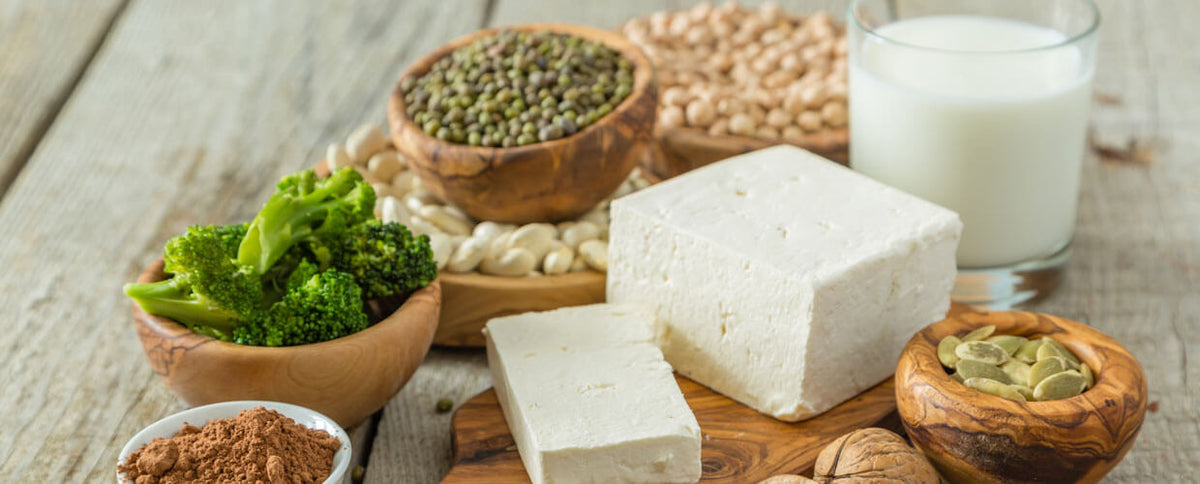How to Go Vegan: 6 Pro-Nutritionist Tips to Start a Plant-Based Diet

Vegan diets are more popular today than ever before. Particularly as elite athletes like tennis ace Venus Williams and ultra-marathoner Scott Jurek prove that fueling fitness through plant-based foods can powerfully benefit performance levels. But if you’ve been a lifelong meat-eater, going vegan can feel bewildering. Most newbies are concerned with how to go vegan. Specifically, how to get enough protein, fats and essential nutrients without the help of animal products. “To live as a vegan in a non-vegan world takes both courage and curiosity,” says Dominika Piasecka of the Vegan Society. “But taking it slow, asking for help, and planning ahead all make the transition easier.
So, if you want to know how to go vegan but aren’t sure where to start, read on for some expert advice on how to switch—and stick—to an animal-free diet.
Related: A Plant-Based Diet for Athletes: Can You Be a Vegan Athlete?
1. Make Small Changes
There’s no right or wrong way to go vegan, says Piasecka. Though she notes some people manage to go vegan overnight, for others it’s not that easy or possible. “Keep your end goal in mind but go at your own pace,” she advises. “Making small changes to your everyday meals is one of the easiest ways to increase the amount of plant-based foods in your diet.”
2. Try New Things
Don’t just clear the meat from your plate when making animal-free meals. Instead, use your veganism as a reason to test-drive new dishes. “Treat your taste buds to new foods and flavors,” says Piasecka. “Leaving your food comfort zone will take you on a voyage of discovery of new cuisines. There are thousands of vegan recipes out there from every corner of the globe.”
3. Relax about the Protein, Already
Would-be vegans often worry about their protein intake. As Dr. Kate Marsh, an Australian-based dietician and author notes, “It’s a common myth among both consumers and health professionals that protein needs are difficult to meet on a vegetarian diet.”
However, in a study published in the Medical Journal of Australia, Dr. Marsh points out that strict protein-combining is not necessary at every meal because “the human body maintains a pool of amino acids which can be used to complement dietary protein.”
Add to that the fact that plant foods such as legumes, soy, nuts, seeds, and even grains and vegetables all contain some protein and you can rest assured you’ve got your intake covered.
4. Combine Your Foods Mindfully
Next to possible protein problems, many new vegans believe they’ll have to cram in the carbs to feel sated after eating. But Ayelet Mintz, a vegan nutritionist and clinical herbalist says, “Mindfully combining your food choices can lead to greater satiety for longer periods.”
Mintz suggests becoming friends with plant-based fats for that post-meal feeling of fullness. “For example, rather than eating a carb and/or protein-heavy meal alone, throw in some avocado, hemp hearts, or tahini. Fat causes food to metabolize at a slower and more stable pace,” she explains, “so it will leave you feeling fuller for longer.”
Related: 7 High-Protein Plant-Based Dinners Every Spartan Should Try
5. Embrace the Dynamic Duo of Vitamin C and Iron
Mintz, who works with clients online to help them transition from an animal-based to a plant-based diet, also highlights the importance of iron intake. While dietary iron comes in two forms – heme and non-heme – vegan diets only include the less easily-absorbed non-heme. However, Mintz advises that this can be overcome by combining iron intake with vitamin C, which enhances the absorption rate of iron.
“If you’re asking, ‘what does this mean for me?’ it’s quite simple,” she says. “The next time you cook yourself a bowl of iron-rich lentils add a drizzle of tahini on your salad, and squeeze some lemon on top of that too. Mindfully pairing these two nutrients together optimizes your iron absorption, which is exactly what we want!”
6. Ask for Help
And finally, “Remember that going vegan is a learning curve,” says Piasecka. It can take days, weeks, even months to figure out the vegan foods available to you and how to cook them. So seek help where you can, she suggests. The Vegan Society has a range of resources on everything from explaining veganism to your family to baking cakes without eggs.
But don’t stop there. Read up on facts, find new recipes, and don’t stress along the way. “As long as you eat a wide variety of tasty plant foods, planning a healthy diet that incorporates all the vitamins and nutrients you need will turn out to be a breeze,” assures Piasecka.




